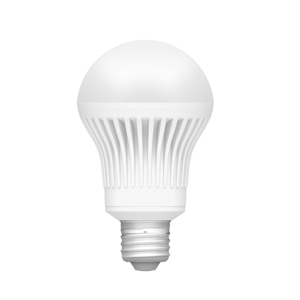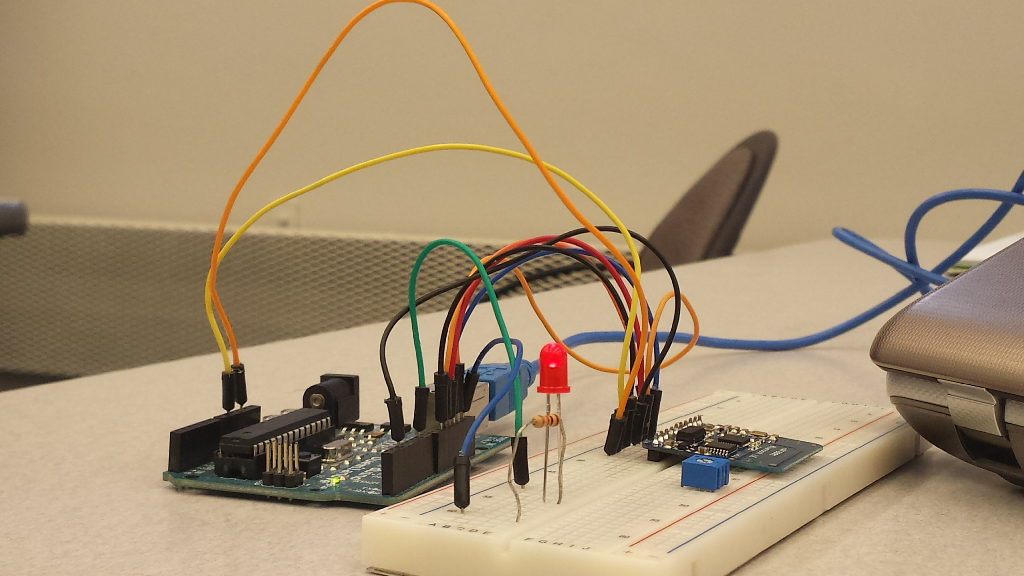Efficient Lighting LED


04/18/16: .
This week we received the PCBs and parts. We soldered together the microcontroller boards and started testing the functionality. John built the case for the lights and david created the two-output power supply. We put the entire system together and tested the overall functionality.
04/11/16: .
This week John completed the spectrum testing for LED light output. John also bought the material necessary to build a case. David is working on stablizing the output of the power supply.
04/04/16: .
This week we ordered the microcontroller and power supply PCBs. We are also updating the micrcontroller firmware to include a real-time clock functionality for power measurement and timing functionality. We are also finalizing the bill of materials for the PCBs that were sent out.
03/28/16: .
This week we will be updating our senior design professor on our progress and work that needs completed. We have been preparing a powerpoint that we will use during the presentation.
03/21/16: .
This week our group worked on the upcoming update presentation. Ryan and Mitchell are also finalizing the microcontroller board design. Alex and Flavia are working on mirroring each mobile application's functionality and design. The group is continuing to have design review sessions every Tuesday.
03/07/16: .
This week John went through a design review for the LED light bulbs. The design review went well. We addressed minor issues that could come up in the future. Ryan and Mitchell Also had the microcontroller PCB design review. The group uncovered some issues that will be resolved by the next design review. David is continuing to make progress on the power supply. The mobile application team is testing the applications using an arduino prototype.
02/22/16: .
The group is continuing to progress on the hardware and software requirements. David is continuing to improve the power supply design. John is finalizing the LED PCB and bulb design and preparing for a design review next week. Ryan and Mitchell are finishing up the PCB design and preparing information for a design review. Alex and Flavia are making progress on the mobile applications.
02/15/16: .
The group is currently progressing on the individual hardware and software components. David is making significant progress on the power supply. An issue with stability was resolved by changing the compensation network. John is currently designing a circular PCB for the light bulbs. Flavia and Alex are designing the user interface to iOS and Android mobile applications. Mitchell and Ryan are designing surface mount and thru-hole PCBs.
02/08/16: .
This we the group made the several decisions pertaning to the hardware components. We decided that we will be keeping the power supply separate from the microcontroller board. This will allow us to design the PCBs efficiently. We also decided that we will be making a thru-hole version of the PCB. This will reduce the amount of risk involved in manufacturing the board. We will evaluate each design at the design review.
02/01/16: .
This week, we discussed the user interface for the iOS and Android applications. We are continuing to develop the mobile applications and test them using an arduino prototype. We are also currently determining how to approach building the next hardware prototype. We are deciding whether or not to join the power supply, bluetooth controller, and microcontroller onto one PCB. We also discussed the best way to present our project quickly and efficiently.
01/15/16: .
This week, we began planning our goals for the new semester. Our first order of business was determining times so that we could schedule two meetings each week. After this, we discussed splitting the mobile app into both Android and iOS versions, whereas the previous plan was to support iOS alone. On the hardware side, we discussed consolidating the power supply, Bluetooth module, and circuit board into one single unit, and to make that unit small enough to fit into one existing outlet box.
11/30/15: .
We've made substantial progress on the transformers for the power supply, as well as finalizing the schematic for the microcontroller. Most of our energy has been spent preparing for the presentation next week, though we're also working to create more bulbs and touching up our power supply so that we have a more robust and complete prototype. The software team has begun rework on the UI for the iOS app, completing the transition from Swift to Objective C.
11/16/15: .
We have a working light this week, as we've completed the soldering of our custom light bulb. We've also almost finished work on our power supply, with new soldering. We had a slip up with the soldering, so the prototype isn't ready, but the design has been finalized. We had another website redesign, and are working on a way to communicate with the PWM circuitry without interfering with the Bluetooth functionality (the two share a controller bus). Moving forward, we are planning a new iOS app for the software side, and then merging everything together for the demo.
11/09/15: This week, the software team was able to option the microcontroller so that testing of the hardware/software pairing and communication under the new framework could begin. Concurrently, our hardware team was able to move forward with the PCB design. Despite setbacks related to printing the PCB form, we were able to overcome and get the circuit board for the light bulb printed onto a transparent overlay. This overlay was then used to create a physical surface board via a complex chemical procedure. Another accomplishment we reached was successfully programming the Arduino using the AVR programmer instead of the USB, which was a goal going forward from last week.
As we proceed into the next week, we will continue exploring the BTLE (Bluetooth Low Energy Service) protocols that we will use with the library and framework we have selected to communicate between the microcontroller and the iOS application. Specifically, we will investigate exactly which headers we will be using, as well as determining how we will handle a disconnect of the Bluetooth pairing. The present idea is to have the iOS app automatically re-pair with the previously connected device. Each team member worked for approximately nine hours this week.

11/02/15: The software team ran into a setback with the Multipeer Connectivity framework upon realizing that the framework only allows for communication bewtween various iOS devices, and not between iOS devices and other Bluetooth-enabled devices. As such, it will not work for our purposes, and the software team is now investigating a framework that will allow us to communicate with the Atmega 328 microcontroller the hardware team is using.
Our hardware team developed printed circuit board designs for both the power and the custom LED boards themselves. Moving forward, we can begin to fabricate those boards into physical boards we can then use to create working prototypes. Another goal the hardware team has is to program the microcontroller without the use of the USB connection.
10/26/15: In addition to a site redesign, our software team was able to make several breakthroughs in Bluetooth connectivity this week. Specifically, we were able to establish Bluetooth communication between two iPhones with multi-peer protocols and advertising. This allows for eight simultaneous connections. The next step for the software team is to establish Bluethooth communication with the microcontroller.
Meanwhile, the hardware team was able to finalize the plans for the power supply and transition them from a breadboard to a soldered circuit board. This design may be tweaked in the future, but it accomplishes all of our current goals. The next step for the hardware team is to transition to a printed circuit board that can be easily reproduced.
10/19/15: Many things came together this week as Ryan and Mitchell collaborated to finish up printed circuit board (PCB research), while Flavia and Alex's bluetooth research also drew to a close. David and John oversaw the selection and ordering of LEDs which we can combine with our existing prototype to create a more realistic representation of what the final product will look like. Additionally, we settled on Multipeer Connectivity as a framework for communicating between the iOS app and the microcontroller(s). Basically, Multipeer Connectivity allows both the phone and the controller to act as "peers" and create "sessions" of data transfer between other peers. This should allow us to send data to and from the controllers and the phone.
10/12/15: This week was a week of planing as we cemented our timeline for the semester. Ryan worked with Flavia and Alex to develop a bluetooth protocol standard, while John researched LEDs and selected some for purchase. This took about an hour. Additionally, Mitchell spent an hour studying printed circuit board (PCB) designs, and investigating the licensing on several software libraries that may prove useful to the team. David worked for about an hour and a half planning different controllers for the surface mount version of the controller, as well as the through hole version of the controller.

10/05/15: Ryan led the hardware team in creating a more advanced prototype capable of communicating with a phone over Low Energy Bluetooth. The current phone app we are using allows for text based communcation. A chip on the prototype interprets text sent as a pulse width, and uses Pulse Width Modulation (PWM) to adjust the brightness level of an LED. We can now turn a light on and off wirelessly from a phone. Mitchell took charge of documentation, while Alex and Flavia researched Bluetooth Low Energy communication and standards on iOS, and Ryan compiled a list of parts, while investigating constraints regarding regulations, Color Rendering Index (CRI), and temperature coefficients.
9/28/15: Having become comfortable with Swift and XCode, Flavia and Alex began designing the website, while John worked to dissemble LED bulbs to get a sense for the internals. This will be invaluable for the reverse engineering process. David spent this week buiilding a prototype power supply which will continue to be refined until it can be integrated into the final product. Ryan and Mitchell continued their research of regulations, standards, and existing techlnlogy.

Group 1537 Efficient Lighting
Fall 2015 - Spring 2016